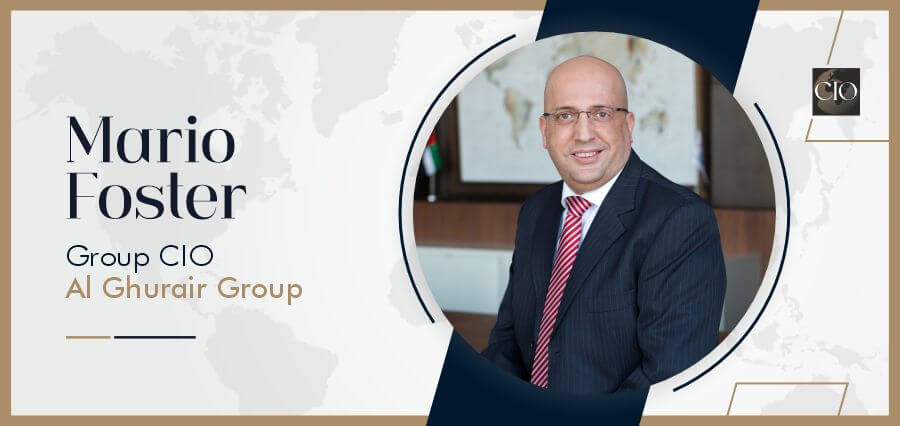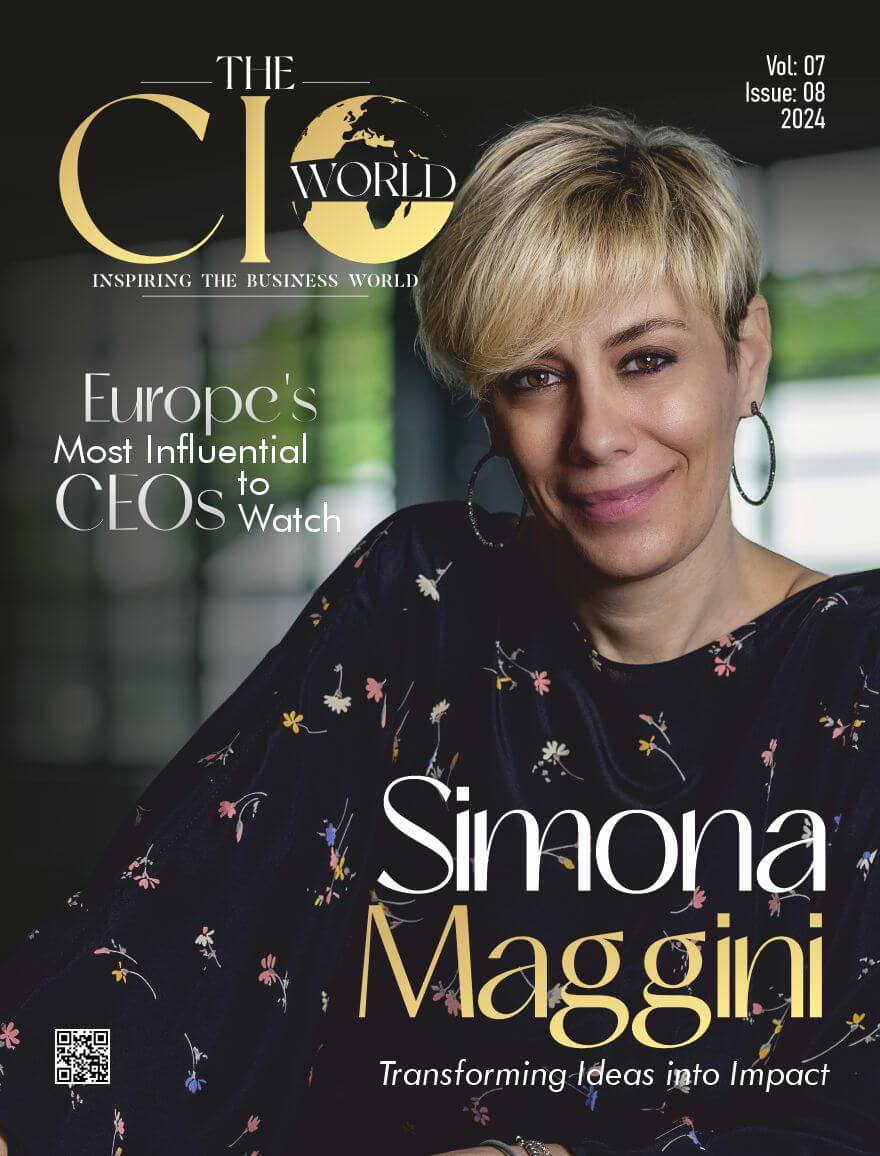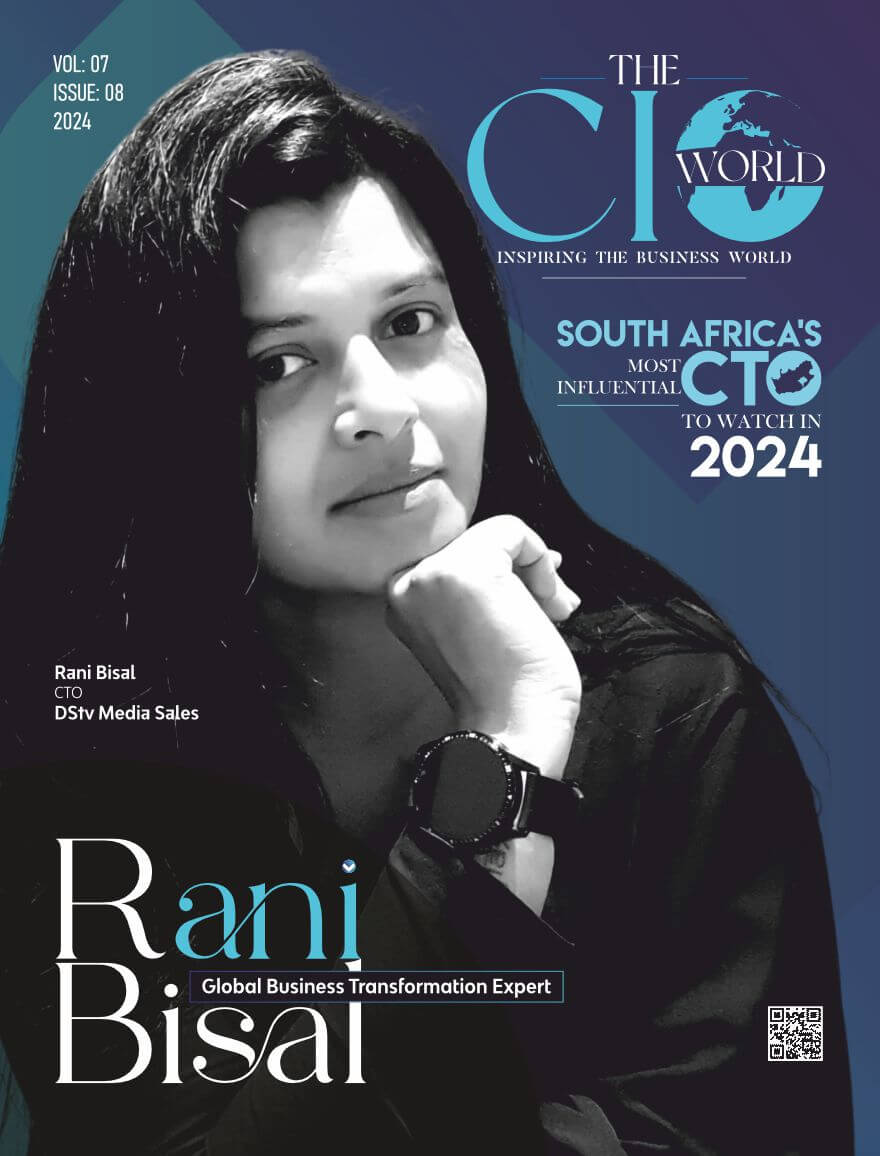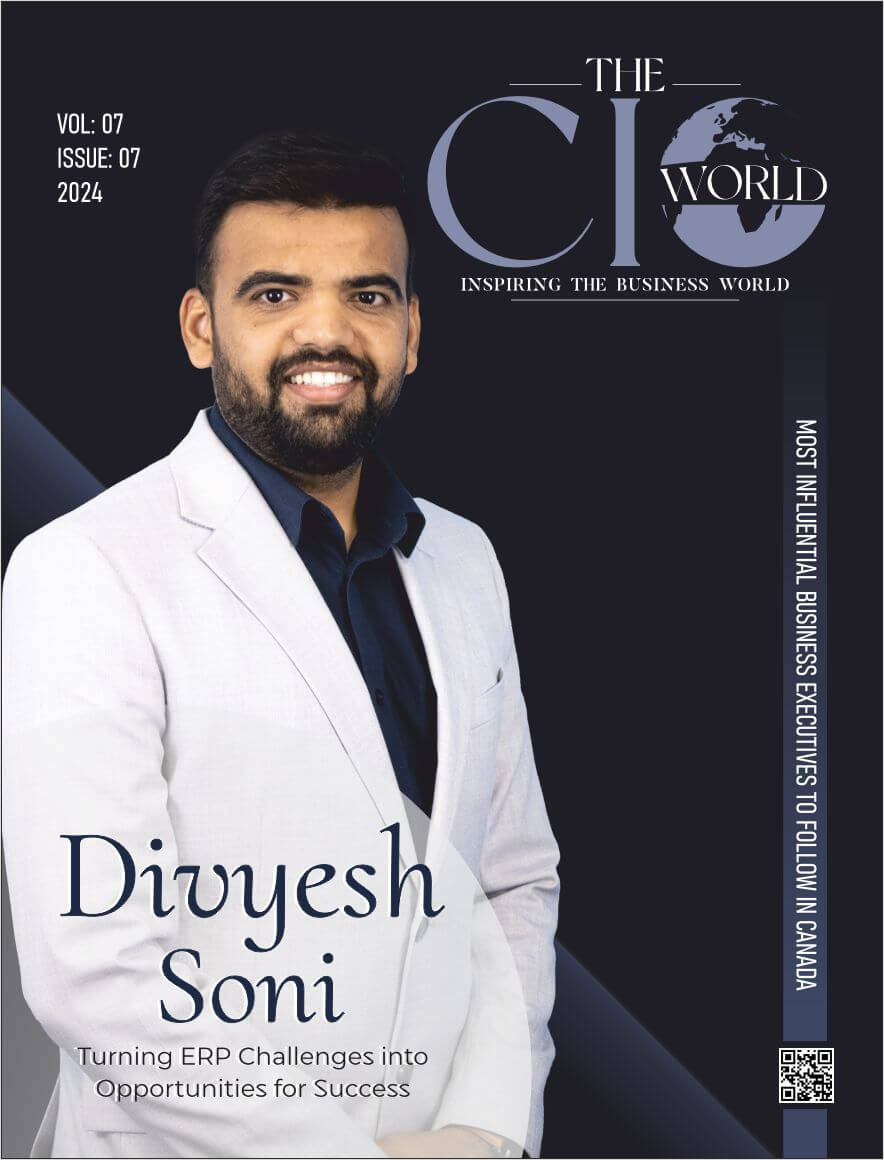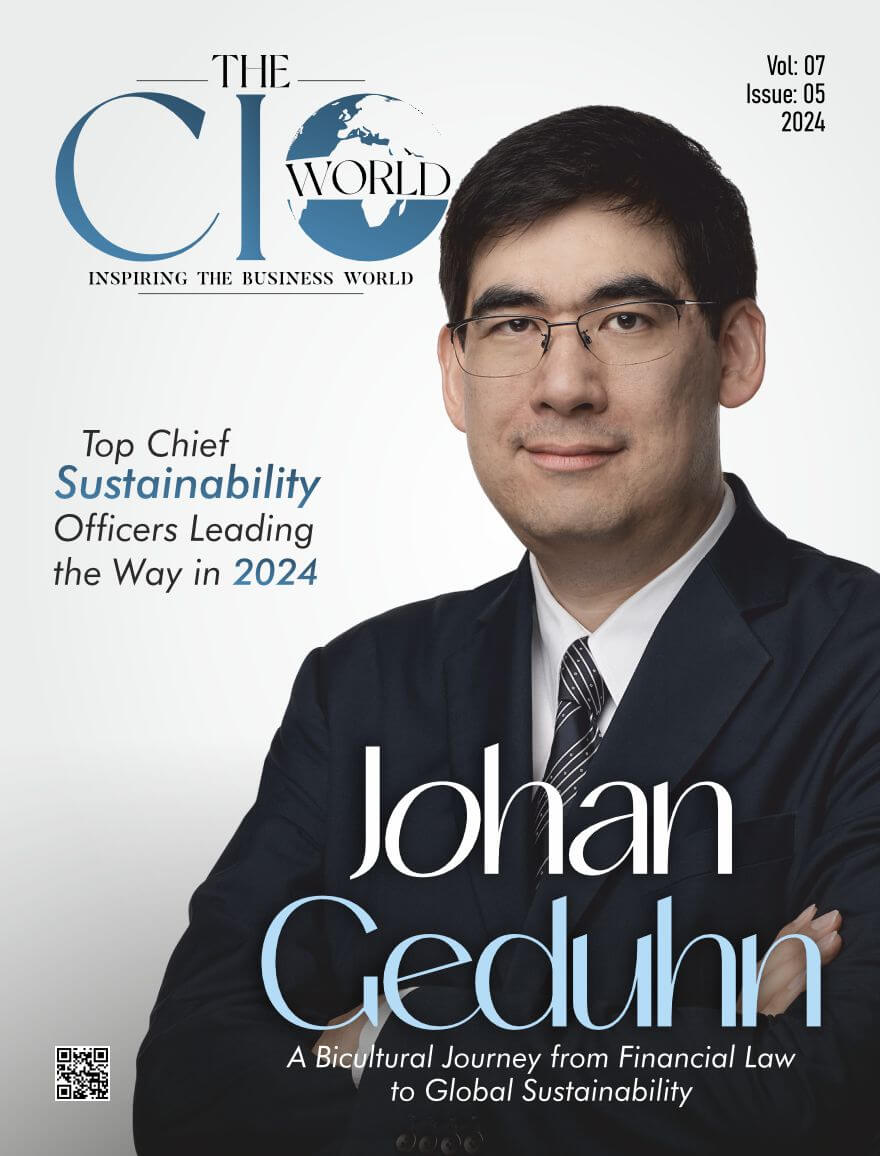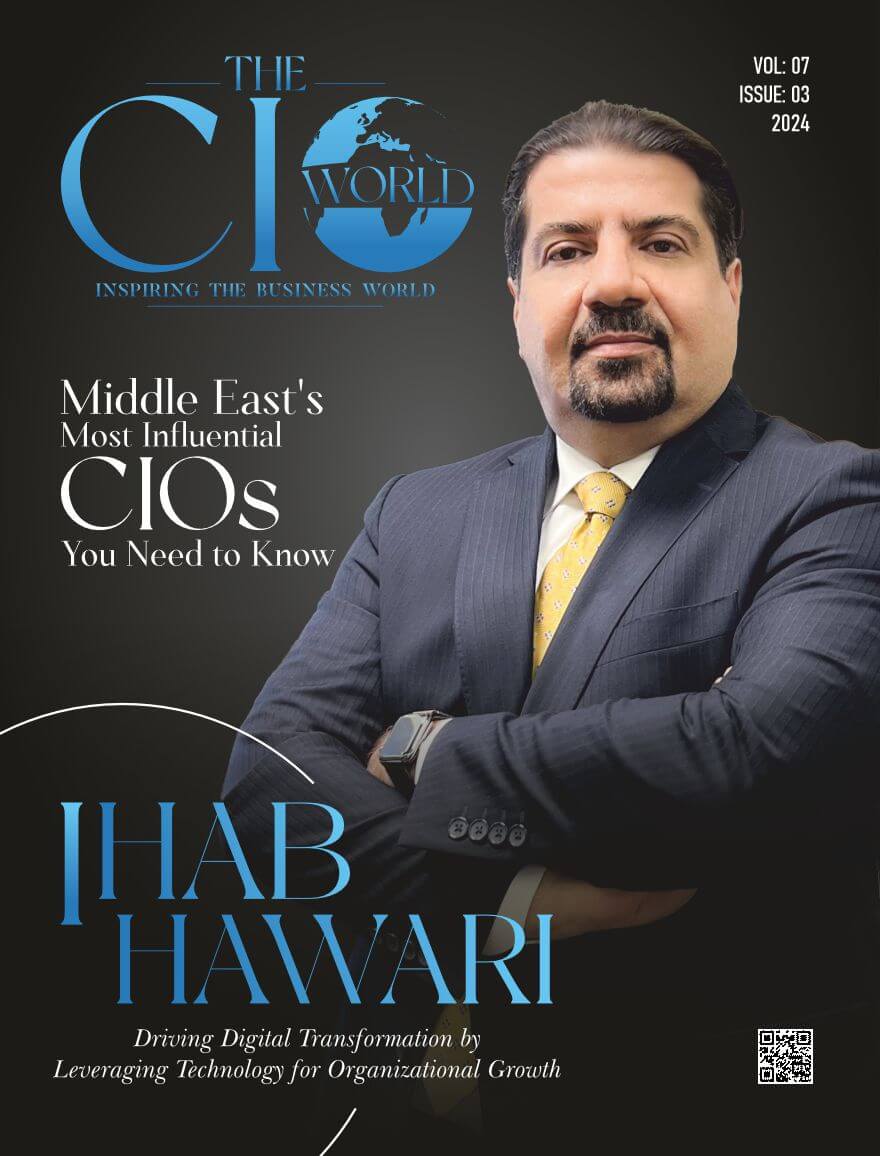Mario Foster is a seasoned Group Chief Information Officer (CIO) with an impressive track record in the IT sector. With a career spanning nearly three decades, his journey began in the heart of Canada, where he laid the foundation of his expertise in Information Technology (IT).
From his early days in IT hardware support, Mario’s career trajectory took him across borders, from the tech hubs of the US to the Middle East. It’s here, across the economies of Saudi Arabia and the UAE, that Mario truly thrived. Over the years, he honed his skills across various domains, from infrastructure management to cybersecurity, and eventually shifted to enterprise applications, pioneering the integration of cutting-edge technologies like Business Intelligence (BI) and Artificial Intelligence (AI).
For the past 15 years, Mario has held the prestigious position of Group CIO for four prominent family business conglomerates in the Middle East. In this role, he’s navigated through a myriad of industries, including Software, Banking, Real Estate, and Manufacturing, among others. Mario’s strategic foresight and technological prowess have been instrumental in spearheading numerous digital transformations, driving innovation, and fostering sustainable growth across diverse business verticals.
Throughout his illustrious career, Mario has mirrored excellence, earning over 25 awards for his outstanding contributions to the fields of IT and cybersecurity. His accolades speak volumes about his dedication to driving impactful change and his commitment to advancing the digital agenda in the Middle East. Presently, Mario brings his wealth of experience and visionary leadership to Al Ghurair Group in the role of Group CIO, where he continues to redefine the role of technology in driving business success.
Let’s join in the interview conversation on how Mario is cementing his legacy as a transformative leader in the digital age!
Can you please brief us about your company and its inception story?
Al Ghurair Group is a pivotal force in the UAE’s economic landscape. It was established in the 1960s by Saif Ahmed Al Ghurair. Born from the entrepreneurial spirit of a family rooted in pearl diving, it has evolved into a major conglomerate spanning diverse sectors, including banking, real estate, manufacturing, and retail.
Notably, it founded Mashreq Bank in 1967, marking a significant foray into finance. With a proud heritage stretching over six decades, Dubai-based Al Ghurair Group is a diversified family-owned conglomerate with interests in manufacturing, real estate and financial investments and an expanding global presence.
Tracing its business roots back to the 1960s, Al Ghurair has played an important role in the transformation of the Dubai economy, with pioneering ventures in manufacturing, real estate and other sectors.
One of the most respected and successful businesses groups in the United Arab Emirates, the Group today owns a diverse range of businesses including the manufacture of flexible plastic film, extruded aluminium and galvanized steel, along with other packaging products.
Al Ghurair, which also operates shopping malls and manages a large real estate portfolio in Dubai, continues to pursue growth opportunities while adhering to its values of excellence, innovation and integrity.
As a CIO, how would you approach aligning your technology strategies with your business objectives to drive growth and efficiency?
Aligning technology strategies with business objectives is paramount for driving growth and efficiency as a CIO. Here’s my approach:
- Understand Business Goals: Engage stakeholders to grasp current objectives and long-term visions. Identify how technology can support goals such as enhancing the customer experience or improving operational efficiency.
- Develop a Technology Roadmap: Prioritize projects aligned with business objectives. Create a flexible roadmap, considering emerging technologies and detailing timelines, outcomes, and resources.
- Foster Collaboration: Establish cross-functional teams to drive projects with input from IT and business units. Regular meetings ensure alignment and adaptation to evolving needs.
- Leverage Data and Analytics: Implement robust data management and analytics to gain insights into customer behavior and market trends. Use these insights to inform strategic decisions.
- Embrace Agile Development: Adopt agile methodologies to align projects closely with business needs. Iterate rapidly based on feedback to ensure continuous alignment.
- Measure and Communicate Value: Establish metrics to gauge the impact of technology initiatives on business objectives. Regularly report metrics to stakeholders to maintain alignment and support for IT strategies.
This approach ensures technology strategies are integrated with business objectives, driving growth and efficiency through collaboration, data-driven decisions, and agile practices.
What are the latest emerging technologies, and how would you integrate them into the existing infrastructure?
Emerging technologies like AI and ML, Blockchain, Internet of Things (IoT), and Edge Computing are poised to significantly impact our industry by enhancing decision-making, security, connectivity, and data processing capabilities.
- AI and ML can automate and optimize operations, offer personalized customer experiences, and improve data analytics for better decision-making.
- Blockchain enhances transparency and security, particularly in transactions and data management, making processes more efficient and trustworthy.
- IoT connects devices to collect and exchange data, enabling smarter operations and improving customer experiences through enhanced data insights.
- Edge Computing processes data closer to its source, reducing latency and bandwidth use, which is crucial for real-time applications.
Integrating these technologies requires a strategic approach that focuses on scalability, security, and interoperability. Starting with pilot projects, upskilling teams, adopting a modular infrastructure, and prioritizing security will ensure successful integration and leverage these technologies to drive growth and innovation.
How do you plan to foster collaboration between IT and other departments within your company to enhance overall productivity and innovation?
Fostering collaboration and communication between IT and other departments is crucial for unlocking productivity and innovation. Here’s how I plan to enhance these aspects:
- Establish Cross-Functional Teams: Create teams with members from IT and other departments for projects, promoting diverse perspectives and aligning technology solutions with business needs.
- Regular Stakeholder Meetings: Conduct frequent meetings with department heads to discuss projects, address challenges, and explore technology opportunities, ensuring alignment with business objectives.
- Co-Development Initiatives: Encourage collaborative projects where IT and other departments develop tools together, fostering ownership and teamwork.
- Training and Knowledge Sharing: Organize training sessions on technology trends for all employees, promoting digital literacy and innovative thinking.
- Feedback Mechanisms: Implement structured feedback channels for departments to suggest IT improvements, enhance understanding, and make service adjustments.
- Visibility of IT Projects: Increase project visibility through updates and showcases, highlighting successful collaborations and project benefits.
- Champion Collaborative Culture: Lead by example, foster open dialogue, and recognize collaborative efforts across the organization.
By implementing these strategies, IT will become a strategic partner, integrated with broader company goals, driving success through collaboration and communication.
How do you stay updated on the latest trends and advancements in the field of information technology, and how are you leveraging this knowledge for the benefit of the company?
To stay current with the rapidly evolving IT landscape and leverage this knowledge effectively:
- Continuous Learning: Commit to ongoing education through structured courses, certifications, and attending workshops focused on emerging IT trends and technologies.
- Professional Networking: Actively participate in industry forums, professional groups, and conferences to exchange insights with peers and experts in the field.
- Industry Publications: Regularly read reputable IT and tech-related publications, journals, and online articles to keep abreast of the latest developments and innovations.
- Tech Communities and Forums: Engage with online tech communities and forums where professionals discuss new technologies, challenges, and solutions in real-time.
- Vendor and Technology Workshops: Attend workshops and seminars hosted by tech vendors to gain first-hand knowledge of new products and services.
- Experimentation and Pilot Projects: Foster an environment of experimentation within the IT department to test and evaluate new technologies before full-scale implementation.
- Feedback Loops from Business Units: Establish feedback mechanisms with other business units to understand their needs and challenges, which can guide the exploration of relevant technological solutions.
By adopting these strategies, I plan to ensure that our IT strategy not only stays aligned with the latest technological advancements but also directly contributes to our company’s strategic goals and operational efficiency. This comprehensive approach allows for a proactive stance in leveraging technology for innovation, competitive advantage, and business growth.
How would you describe your leadership style, and how do you envision it fitting into the culture of the company?
I would describe my leadership style as collaborative, results-oriented, and adaptive. I believe in fostering a culture of openness and innovation where team members feel valued and empowered to contribute their ideas and expertise. This approach encourages a sense of ownership and accountability, driving teams towards achieving collective goals while also supporting individual growth and development.
In terms of fitting into the culture of your company, I envision my leadership style complementing an environment that values teamwork, innovation, and continuous improvement. By prioritizing collaboration, I aim to bridge gaps between IT and other departments, ensuring that technology initiatives are closely aligned with business objectives. My focus on results will drive efforts to deliver projects on time and within budget, maximizing the value of IT investments.
Adaptability is key in the fast-paced world of technology, and I am committed to staying ahead of industry trends and leveraging new opportunities to drive success. I actively seek feedback and engage with all levels of the organization to ensure that IT strategies remain responsive to the evolving needs of the business and its customers.

